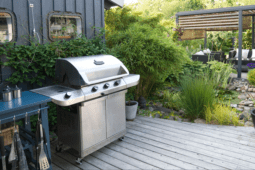How to Safely Trim Overgrown Tree Branches Near Your Home
Towering trees add beauty and character to our homes, but when left unchecked, they can become unruly giants threatening our safety and property. Proper tree maintenance is essential for preserving the health and aesthetics of your landscape while ensuring the safety of your home and family. This comprehensive guide will walk you through the process of safely trimming overgrown tree branches near your home, empowering you to take control of your outdoor space with confidence.
When to DIY and When to Call a Pro
Before diving into any tree trimming project, it’s crucial to assess the situation and determine whether it’s a job you can handle safely on your own. While many pruning tasks can be accomplished by homeowners with the right tools and knowledge, some situations require the expertise of a professional arborist.
Consider calling in a professional if you’re dealing with large branches near power lines, extensive deadwood, or trees close to structures. These scenarios pose significant safety risks and require specialized equipment and training. However, for smaller branches and routine maintenance, DIY pruning can be a rewarding and cost-effective option.

Essential Tools for Safe and Effective Tree Trimming
Equipping yourself with the right tools is crucial for safe and effective tree trimming. Start with a sturdy pair of bypass pruners for small branches up to 3/4 inch in diameter. For larger branches, invest in a quality pair of lopping shears or a pruning saw. A pole pruner can be invaluable for reaching higher branches without the need for a ladder.
Safety should always be your top priority when trimming trees. Wear protective gear such as safety glasses, work gloves, and a hard hat. If using power tools like a chainsaw, be sure to follow all manufacturer safety guidelines and wear appropriate protective clothing.

Start your next woodworking adventure with TedsWoodworking! Dive into 16,000+ projects and bring your ideas to life. Build unique furniture and master new skills with Ted’s detailed, step-by-step plans guiding you every step of the way.
Proper Pruning Techniques
Understanding proper pruning techniques is essential for maintaining tree health and promoting desirable growth patterns. When removing a branch, always make your cut just outside the branch collar – the swollen area where the branch meets the trunk. This allows the tree to heal properly and reduces the risk of disease or decay.
For larger branches, use the three-cut method to prevent bark tearing. Make an undercut about a third of the way through the branch, followed by a top cut slightly further out. Finally, remove the remaining stub with a clean cut just outside the branch collar.

When to Prune for Optimal Results
The best time to prune most trees is during their dormant season, typically late fall or winter. This allows you to see the tree’s structure more clearly and reduces stress on the tree. However, some trees, such as maples and birches, are prone to “bleeding” if pruned in late winter. For these species, it’s best to wait until they’re in full leaf before pruning.
Avoid pruning during the spring growth flush, as this can weaken the tree and make it more susceptible to disease. If you notice dead, damaged, or diseased branches at any time of the year, remove them promptly to prevent further issues.

Dealing with Challenging Branches
Some branches present unique challenges when it comes to pruning. For example, crossed or rubbing branches should be addressed early to prevent damage and promote healthy growth. Identify the stronger or better-positioned branch and remove the other.
Water sprouts and suckers – fast-growing vertical shoots that emerge from the trunk or roots – should be removed as soon as possible. These growths divert energy from the main tree and rarely develop into sturdy, well-formed branches.

Related Articles
- How to Notch A Tree
- A Step-by-Step Guide on How to Fell a Tree with a Chainsaw
- How to Easily Remove Tree Roots on Your Own
By mastering the art of safely trimming overgrown tree branches, you’re not only enhancing the beauty of your landscape but also ensuring the health and longevity of your trees. Remember to always prioritize safety, use proper techniques, and know when to call in a professional. With patience and practice, you’ll soon be pruning like a pro, creating a safer and more beautiful outdoor space for you and your family to enjoy.









